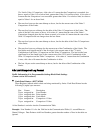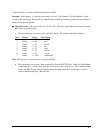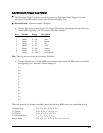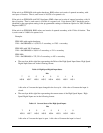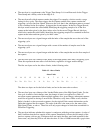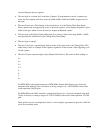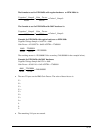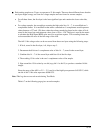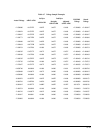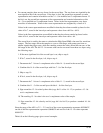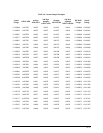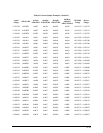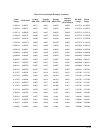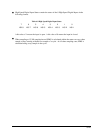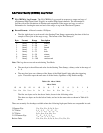
6-14
Q
Each analog sample uses 2 bytes to represent a 15-bit sample. There are three different forms that the
two bytes might occupy, one form for voltage samples and two forms for current samples.
• For all three forms, the first byte is the least significnt byte and contains the lower order bits,
7-0.
• For voltage samples, the second byte contains the high order bits, 14 – 7, in a modified two’s
complement format. It is modified in that while a standard two’s complement would represent
values between +127 and -128, these values have been rounded up based on the value of bit 6,
stored in the lower byte and represent values from +128 to –128. This byte is used by the meter
to calculate the High Speed RMS value used for waveform capture. This rounding centers the
scale around the true zero of the full range of the A/D.
The full 15-bit voltage value can be recovered from these two bytes using the following steps:
1. If bit 6, stored in the first byte, is 0, skip to step 3.
2. Decrement the 8-bit two’s complement value of bits 14 – 7, stored in the second byte.
3. Combine bits 14 – 7 of the second byte with bits 6-0 of the first byte.
4. The resulting 15-bit value is the two’s complement value of the sample.
5. Sign extend the 15-bit value by one bit (copy bit 14 to bit 15) to produce a standard 16-bit
integer.
Since the range of the A/D is +2.5 – -2.5, one bit of the high byte represents 0.019531V, while
one bit of the 15-bit value represents 0.000153V.
Note: This log does not record records during Test Mode.
Table 6.7 on the following page gives several examples.



